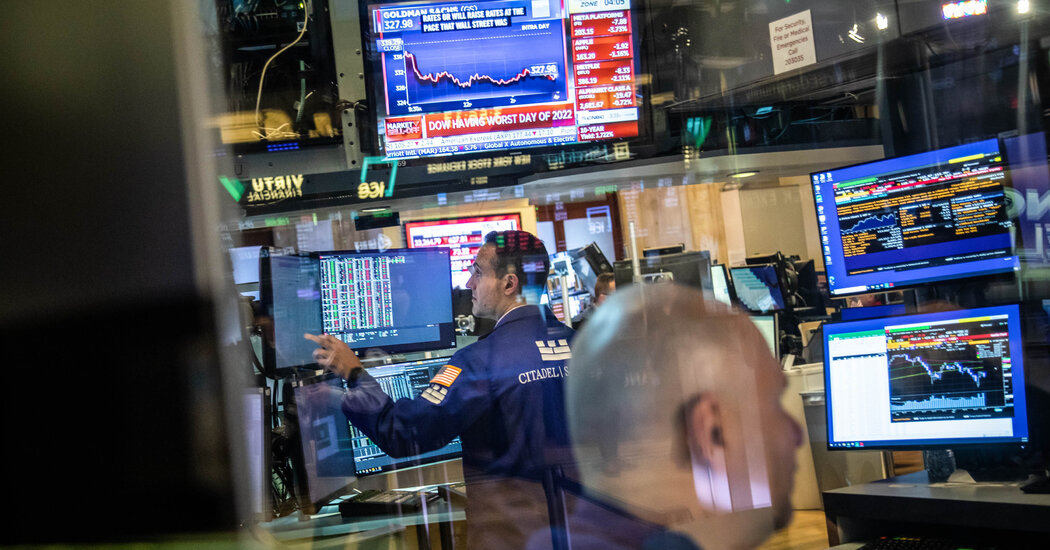Opinion | Inflation’s Impact on Housing in America
One of the occupational hazards of my profession is having people ask me what’s going to happen to the market. I’m never sure whether to give the answer attributed to various famous financial titans — it will fluctuate — or to reply, more accurately, “God knows.” But some predictions seem safe. Clearly, the Federal Reserve will raise interest rates repeatedly over the months ahead, continuing that process until there are clear signs that inflation is coming down to tolerable levels.
But isn’t the Fed far behind the curve? Inflation is at a 40-year high, yet the Fed has only begun to hike. Shouldn’t it greatly raise rates now now now?
Well, no. We need to talk about how monetary policy actually works. And when we do, we’ll see that there’s a troubling paradox about current policy. The Fed must hike: Inflation must be curbed, and as a practical matter, interest rates are the only game in town. Yet higher rates will operate largely by hitting the housing market — and over the longer term, one big problem with America is that we aren’t building enough housing.
One reason discussions of monetary policy can be confusing is that the interest rates the Fed controls don’t really matter in any direct sense to the average consumer. The Fed can effectively determine very short-term interest rates — in fact, its normal target is the interest rate at which banks lend to one another overnight. But no important, real-world decisions depend on that interest rate.
What matters, instead, are longer-term rates, because monetary policy mainly affects the demand for long-lived assets. A business considering whether to invest in software that will be superseded in two years, or even a machine that will wear out or become obsolete in three or four years, doesn’t care much about what interest rate it has to pay. But interest costs are crucial when you’re deciding whether to buy something that will last for decades, like a house. In fact, the most important interest rates for the economy are, you guessed it, home mortgage rates.
And here’s the thing: Although the Fed doesn’t directly determine mortgage rates, banks deciding how much to charge for loans pay a lot of attention to what they think the Fed will do in the future. If they expect short-term rates to go up, they’ll start charging more for home loans right away, because they don’t want to tie up their money since they’ll be able to get more later.
Sure enough, with everyone expecting the Fed to keep raising short-term interest rates several times over the next year, mortgage rates — and long-term rates for business borrowers — have already shot up more or less to prepandemic levels, even though the Fed has just begun to hike:
So tight money is already here. This will almost surely cool off the economy; whether it will cool things enough to control inflation — or cool them off too much, leading to recession — is something we’ll have to see.
In any case, I don’t see any alternatives for the Fed. I don’t think inflation has gotten entrenched in the economy; markets and consumers both expect it to come down a lot in a year or so. But we don’t want to take the chance that it might get entrenched. So hike the Fed must.
There is, however, a problem. The Fed’s efforts to control inflation will work mainly through the housing market, driving down sales and construction. Which wouldn’t be so bad if it weren’t for the fact that America hasn’t been building enough houses over the long term.
Since about 2014, the cost of shelter, as estimated by the Bureau of Labor Statistics, has been rising considerably faster than the overall cost of living. I’m not talking about house prices; I’m talking about rental rates for apartments and “owner’s equivalent rent,” the bureau’s estimate of what houses would rent for. Here’s the picture:
What’s going on here? The answer is that after the housing bubble and bust of the 2000s, construction of new housing plunged and never fully recovered:
Some of this can be attributed to Nimbyism in places like California and New York, but housing construction has lagged and shelter costs soared even in places like Texas, where zoning is very, um, liberal. So we really need to build more housing in this country.
You see the problem. We need higher interest rates, at least for a while, to bring inflation down. But higher rates will “work” largely by depressing housing construction, which was already too low.
For now, I don’t see an alternative. We could, in principle, try to cool off the economy by, say, raising taxes (good luck with that). Maybe more to the point, a gradual pullback by consumers, as the effects of pandemic aid recede, plus falling inflation may eventually let us get interest rates back down.
For now, however, the Fed looks set to solve one pressing problem in part by making another, less pressing but still real, problem worse.
Check out our Latest News and Follow us at Facebook
Original Source







